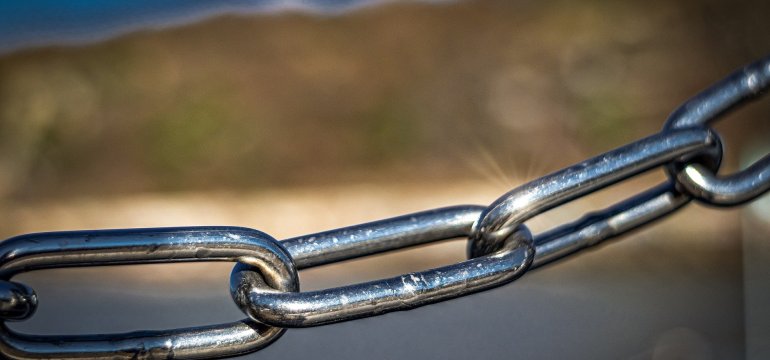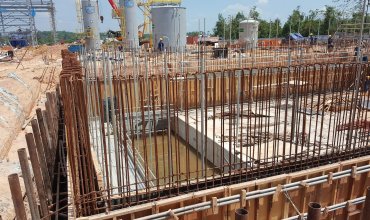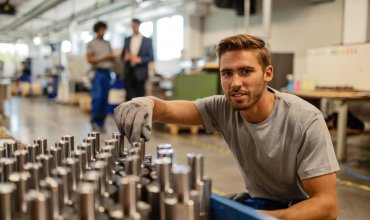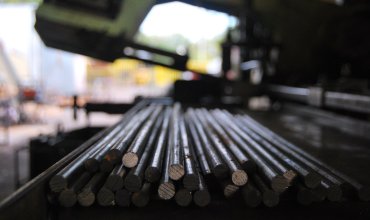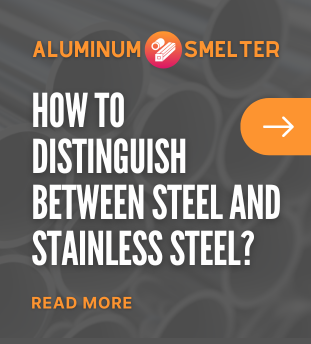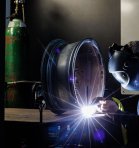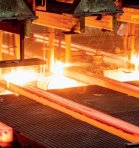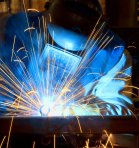Widely recognized as a material of exceptional durability and corrosion resistance, stainless steel is a mainstay of many industrial, construction and everyday applications. It appears to be an almost magical answer to the rust problems that afflict traditional steel. However, despite its name, stainless steel is not completely corrosion resistant. Under certain conditions, it can undergo processes that lead to the formation of rust. This issue is an intriguing paradox that we would like to explore in this article. We will answer the question: why does stainless steel rust, analyzing the various factors affecting its corrosion, ways to prevent it, and special cases concerning the use of stainless steel in Poland.
What is stainless steel?
Chemical composition and structure of stainless steel
Stainless steel is an iron-chromium alloy with a minimum chromium content of 10.5%. Chromium is the key ingredient that gives stainless steel its characteristic anti-corrosion properties. In addition to chromium, stainless steel can contain amounts of nickel, molybdenum, and other elements that affect its durability and corrosion resistance. Due to the reaction of chromium with oxygen in the atmosphere, a thin passivating layer of chromium oxide is formed on the surface of the steel, which protects the material from further oxidation.
Types of stainless steel
There are various types of stainless steel on the market, which differ in chemical composition and physical properties. The most popular are:
Austenitic steel: Characterized by a high nickel and chromium content, which makes it extremely resistant to corrosion and has excellent mechanical properties.
Ferritic steel: Less corrosion resistant than austenitic, but cheaper to produce. Often used in the automotive industry.
Martensitic steel: Has high hardness and is used for cutting and industrial tools.
Duplex steel: A combination of austenitic and ferritic steel, which gives it exceptional mechanical strength and corrosion resistance.
Factors affecting the corrosion of stainless steel
Presence of chlorine and other halides
Chlorine and other halides are among the main culprits responsible for the corrosion of stainless steel. Salt water, which contains high concentrations of chlorine ions, particularly exposes steel to so-called pitting corrosion. Chlorine ions can break through the protective chromium oxide layer, leading to localized damage that can spread over time.
Mechanical damage
Any mechanical damage to the surface of stainless steel, such as scratches, dings or cuts, can break the passive chromium oxide layer. At the sites of this damage, a process of concentrating corrosive agents occurs, resulting in the development of corrosion.
Environmental pollutants
Air pollutants, including acid rain, industrial dust or automobile exhaust, also contribute to corrosion of stainless steel. Acid rain, which contains sulfur and nitrogen, can damage the passive protective layer, increasing the risk of oxidation and rust formation. This explains why stainless steel rusts in areas with high levels of industrial pollution.
Inadequate maintenance and improper cleaning products
Lack of regular maintenance and the use of improper cleaning products can damage the protective layer of stainless steel. The use of aggressive chemicals that contain chlorine or acids can accelerate the corrosion process.
The process of rust formation on stainless steel
Case study: Pitting and intergranular corrosion
The two most common types of corrosion that can affect stainless steel are pitting and intergranular corrosion.
Pittingcorrosion is a localized process that leads to the formation of small but deep pits on the steel surface. It most often occurs under conditions of high chlorine ion concentration, such as in marine environments.
Intergranular corrosion occurs mainly along the grain boundaries of steel. It can result from aggressive chemical or thermal conditions that lead to the decomposition of the passive protective layer at the grain boundaries of the steel. This type of corrosion is particularly dangerous because it can lead to a rapid loss of structural integrity of the material.
Microscopic mechanisms of rust formation
At the microscopic scale, the rusting process begins with damage to the passive layer. Contacts with corrosive agents, such as chlorine, lead to oxidation of iron in stainless steel. The resulting iron oxides and hydroxides are corrosion that develops and penetrates deep into the material, gradually causing it to break down.
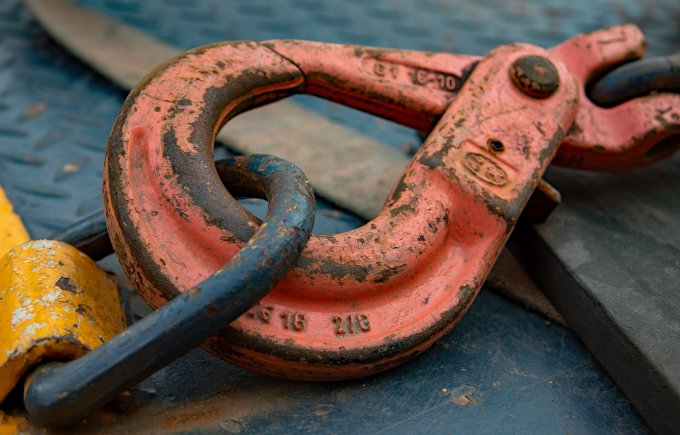
How to prevent corrosion of stainless steel?
The importance of proper selection of materials
When choosing stainless steel, it is important to consider the environment in which it will be used. For example, in environments with a high concentration of chlorine, a better choice will be steel with molybdenum (such as type 316), which has a higher resistance to pitting corrosion. It is also important to use steel with sufficiently high chromium and nickel content so that the passive layer can effectively regenerate after damage.
Regular maintenance
Regular cleaning and maintenance of stainless steel is key to maintaining its anti-corrosion properties. It is recommended to use mild, neutral cleaners and avoid sharp tools that could damage the surface. For hard-to-remove stains, special agents designed for stainless steel are suitable.
Electrochemical methods of protection
Electrochemistry can be used to protect stainless steel from corrosion. The use of anodic protection allows the administration of a controlled electric current that reduces the speed of corrosion. This method is particularly effective in chemically aggressive environments.
Corrosion of stainless steel in Polish realities
Industrial and environmental challenges in Poland
In Poland, where many areas are highly urbanized and industrial, corrosion of stainless steel poses quite a challenge. Stainless steel used in the chemical and petrochemical industries and in building structures is exposed to numerous aggressive environmental factors. Acid precipitation and high concentrations of pollutants in the air contribute to an increased risk of corrosion.
Case study: Corrosion in urban infrastructure
An example is the corrosion of urban infrastructure elements such as railings, bridges and building facades. In cities with heavy traffic and high levels of pollution, stainless steel is prone to more rapid damage, especially if it is not properly maintained. Proper care and the use of appropriate materials in vulnerable areas can significantly extend the life of structures.
Innovative solutions and the future of corrosion protection in Poland
Polish industry and research institutes are working intensively on new technologies and materials that will increase the corrosion resistance of stainless steel. Research is focused on developing new steel alloys, better methods of surface protection and more effective maintenance techniques. Awareness of the importance of choosing the right materials and regular maintenance is growing, which is a positive sign for the future.
Summary
Stainless steel corrosion, despite its name, is a complex and fascinating phenomenon. Why stainless steel rusts is a question that takes us through many aspects of chemistry, physics and materials engineering. From chemical components to mechanical damage and environmental factors, any of these elements can contribute to the loss of stainless steel's valuable anti-corrosion properties. A proper understanding of these processes and the implementation of effective corrosion prevention methods are key to maximizing the durability and functionality of stainless steel, both in Poland and around the world. Attention to detail, regular maintenance and ongoing research and innovation are the cornerstones of protecting this remarkable material from the damaging effects of corrosion.


